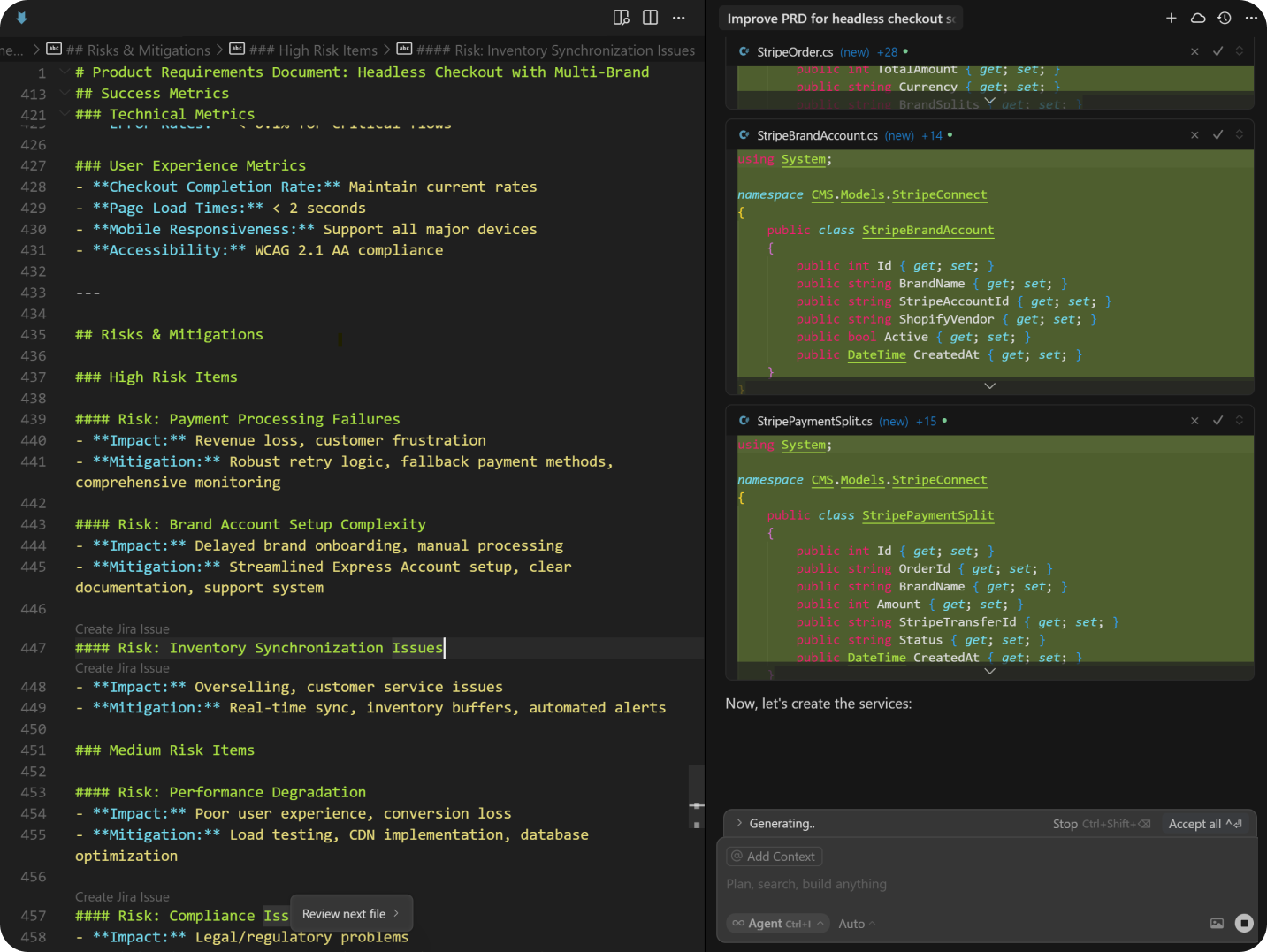You might’ve seen the phrase “vibe coding” floating around on your timeline earlier this year.
It started with a single post on X in February 2025, but it caught attention because it captures the way AI is flipping software development on its head.
There's a new kind of coding I call "vibe coding", where you fully give in to the vibes, embrace exponentials, and forget that the code even exists. It's possible because the LLMs (e.g. Cursor Composer w Sonnet) are getting too good. Also I just talk to Composer with SuperWhisper…
— Andrej Karpathy (@karpathy) February 2, 2025
So, what is vibe coding?
Vibe coding is about getting working code out of a conversation, not a commit log. Instead of writing every line by hand, you describe what you want in natural language. The AI generates code that’s close, and then you iterate.
It’s less about telling the AI how to do something and more about getting it to understand what you want. The focus shifts to outcomes, not the implementation details.
Why we’re leaning into it
When we first started experimenting with vibe coding, it wasn’t just to shave a few hours off dev time (though it does that too). It’s because it changes how we build and how fast we can move from idea to output.
Normally, devs start with detailed architecture and specs, then build line by line. With vibe coding, you start with the idea, the outcome, and let AI help figure out the path. It accelerates everything from concepting, prototyping, to iteration, and even testing.
But beyond speed, it’s a mindset shift. It makes development more creative, collaborative, and accessible (to those with technical knowledge). You still need planning, architecture, and critical thinking, but now, you get to focus on solving real problems, not building another login form from scratch.
We’ve already used this approach in production across greenfield builds, platform enhancements, and bug fixes.
Here’s a taste of what we’ve “vibed” into existence:
- Digital voucher system for a global paint brand (Cursor + Umbraco/.NET)
- Web core monitoring tool for internal ops (Gemini + Next.js)
- US order API integration for a textile manufacturer
And plenty of code reviews, feature rollouts, and CMS automation along the way.

The tools making it happen
Vibe coding isn't just "AI writing code”; it’s a stack of tools working together. Here’s what’s in ours:
- Cursor - our AI-enhanced IDE. Agent mode lets it handle full dev tasks, from writing to debugging
- Vercel v0 - great for UI prototyping and quickly getting stakeholder buy-in
- Gemini / Firebase Studio- handles data pipelines, monitoring, and platform integrations
- MCP Servers – the secret sauce (more on this below)
We also build a strong foundation before generating anything with robust PRDs, custom Cursor rule files (our coding standards), and clearly defined architectural patterns. That’s what keeps the AI focused and output consistent.
MCP servers are the real game-changer
Model Context Protocol (MCP) servers might be the most impactful tool we’re using.
They let AI agents directly connect to CMS platforms, APIs, and databases, and then take meaningful action. That means:
- Managing content types in Umbraco
- Migrating CMS structures automatically
- Generating content or forms via chat
- Prototyping entire commerce flows
- Handling repetitive CMS tasks
Basically, it’s the bit that makes AI actually useful in a CMS-heavy workflow. If you work with Umbraco, it's a whole new way of working.

Faster, cheaper, more flexible
The business case is straightforward.
Vibe coding shortens time to market, reduces dev risk, and lowers cost for both maintenance and experimentation. It’s easier to test ideas, build prototypes, and iterate quickly. Clients feel the benefit almost immediately.
But it’s not just about speed. The AI can handle the boilerplate, freeing up developers to focus on architecture, creativity, and solving the actual problem, not building another login screen from scratch.
The (honest) reality check
Let’s not kid ourselves, it’s not all rainbows and pull requests.
AI isn’t perfect. We’ve seen:
- Code that looks plausible but just... doesn’t work
- Snippets that function, but wouldn’t pass a code review
- Gaps in validation and security handling
So, how do we deal with it?
We layer in human oversight at every step. We treat AI like a junior dev, fast, eager, and helpful, but in need of guidance. Every output gets reviewed by experienced developers. Testing is mandatory. Refactoring is ongoing. That’s how we keep quality high and tech debt low.
Making vibe coding work
To really make vibe coding work, you need to adjust your headspace.
- AI is your pair programmer, not your silver bullet
- Writing good prompts is a skill, and we’ve been honing ours
- Code still needs review, testing, and critical thinking
- The tools evolve fast, and so should we
At the heart of it, AI doesn’t replace good developers, it amplifies them. The better your team, the more the AI enhances its output.
What we’ve learned
Some of our key lessons from using vibe coding in real-world builds:
- Planning is everything – our best projects started with well-defined PRDs and finely tuned Cursor rule files
- The first output is never the final answer; AI speeds things up, but review and refactoring are critical.
- Code quality depends on the inputs; the better your rules and prompts, the better the output
- Vibe coding works best when paired with senior oversight, this isn’t hands-off automation
Where it fits best (and where it doesn’t)
Vibe coding thrives in greenfield projects, headless CMS builds, and feature development. It’s also powerful for code reviews, refactoring, and internal tools.
It struggles with:
- Legacy codebases with poor documentation
- Highly specialised or niche frameworks
- Teams without enough technical oversight
It’s not a no-code solution, it’s for developers who know what they’re doing and want to go faster.
Why we're excited
This isn’t just something we’re testing in the background, it’s part of how we deliver.
We’re building custom APIs, test suites, and admin features faster than ever. And we’ve got more headless CMS projects in the pipeline where vibe coding will play a central role.
We believe this approach will soon be the standard, not just for innovation, but for practical, efficient, and scalable development.
Key takeaways
We’re not experimenting for the sake of it. We’re building things faster, better, and more creatively than ever before, and our clients are already seeing the benefits.
Here are the key takeaways:
- Good planning beats good tooling so start with a strong brief
- Oversight matters, and you still need developers
- Quality rules everything, especially your cursor rules
- MCP Servers are the future, especially in CMS work
- AI is a tool, not a threat, it’s not replacing your team, it’s giving them more time
Do you want to see how this could work for your business?
We’re already building with Vibe coding and Umbraco every day, and we’d love to show you what’s possible. If you're curious how this approach could speed up your delivery and reduce complexity, let's have a chat.

Ready. Steady. Grow!
We've helped some of the world's biggest brands transform and grow their businesses. And yours could be next.
So if you've got a business challenge to solve or a brief to answer, we'd love to hear from you. Simply complete this form and one of our experts will be in touch!




